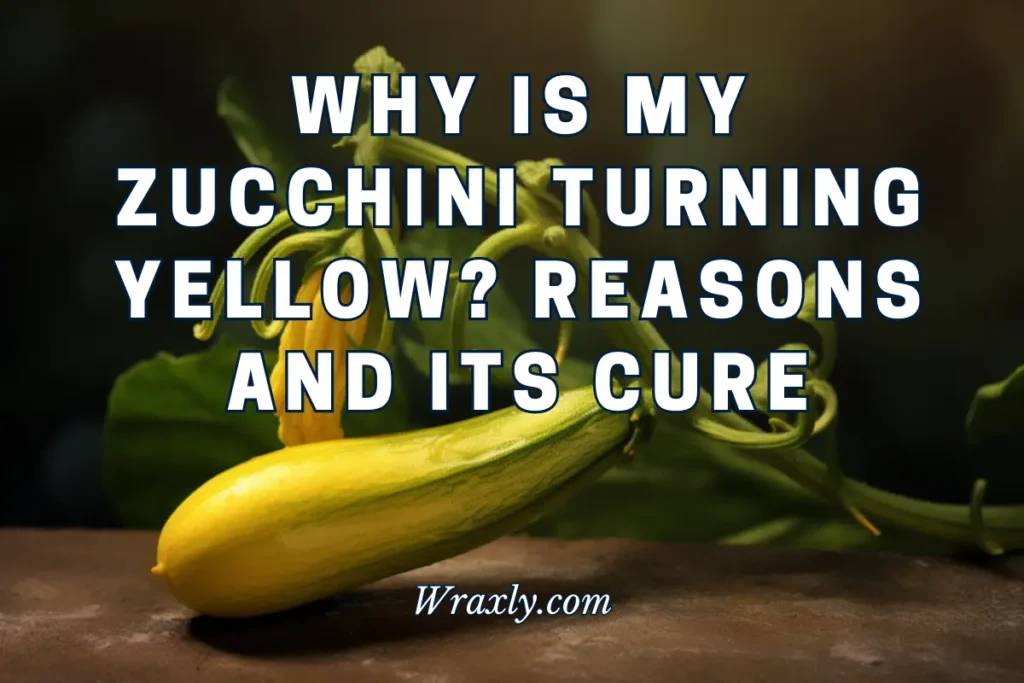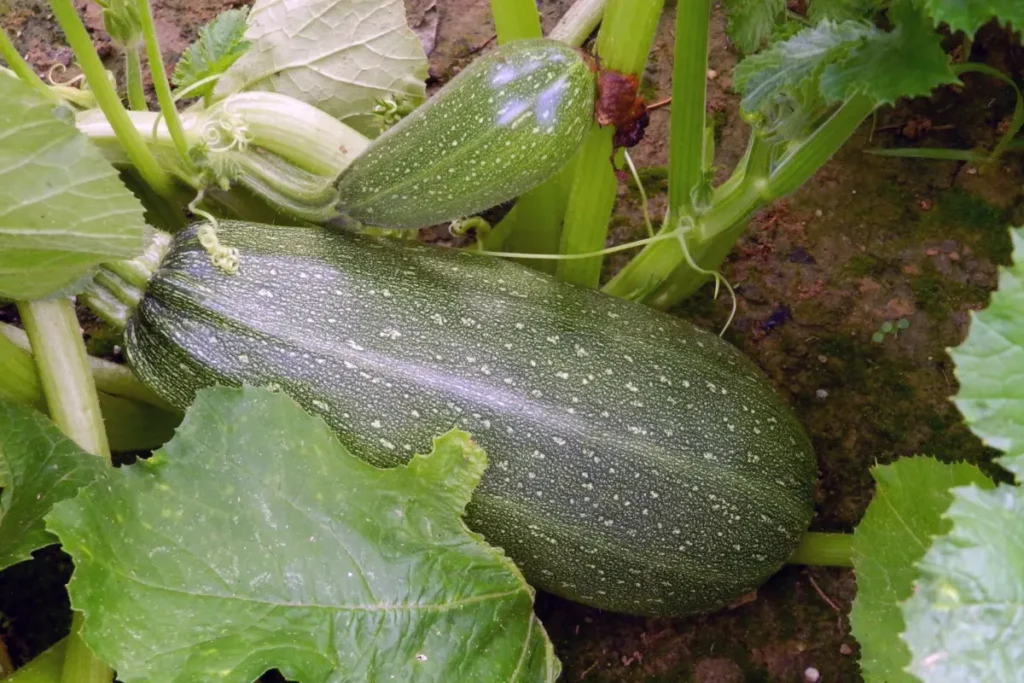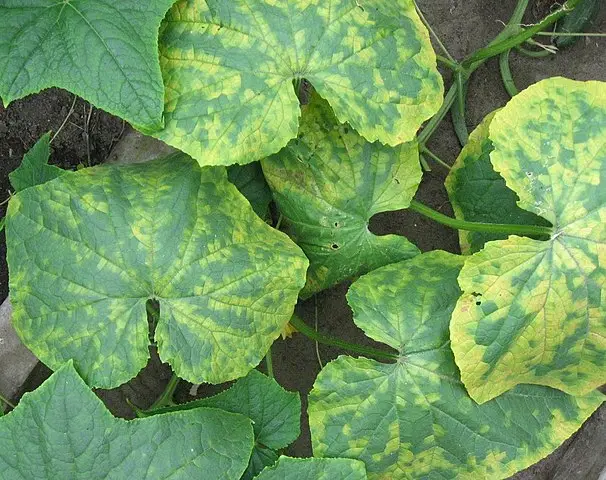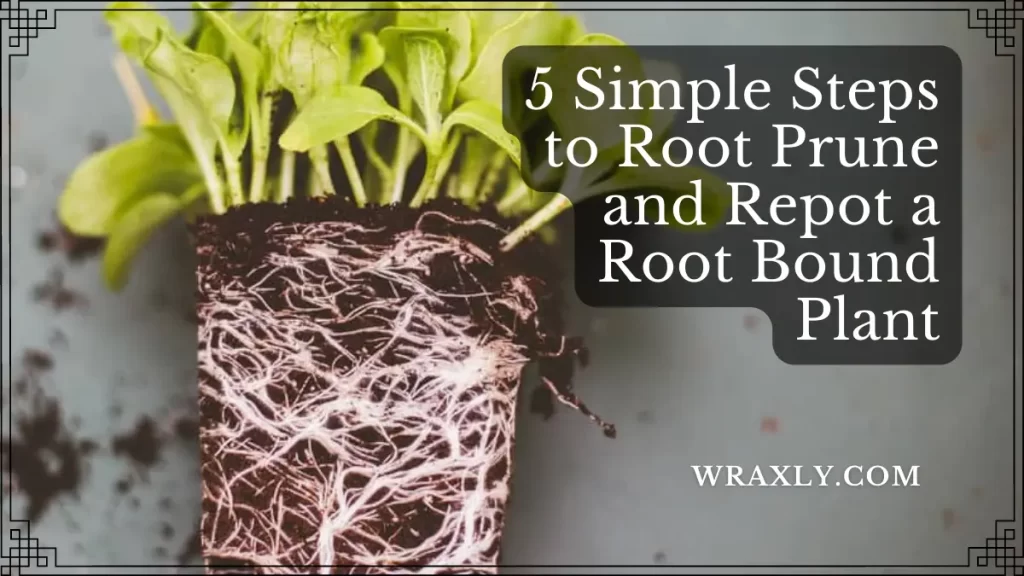Have you ever grown zucchini in your garden and suddenly noticed it turning yellow? You probably asked yourself, “Why is my zucchini turning yellow?” Well, you’re not alone! Many a gardener has wondered why their zucchini turns yellow.
In this article, we’ll explore the most common causes of yellow zucchini and provide some tips on how to help your plants stay healthy and vibrant. So, let’s get started and find out why your zucchini is turning yellow!

About Zucchini: the Biology of a Zucchini
The Cucurbitaceae family includes summer squash, also known as zucchini. The distinctive flavor of its fruit is universally adored. Its fruit is useful in some areas because it is an ingredient in some delicious dishes.
1. Height
Zucchini may grow between 12 and 36 inches (30.48 and 91.44 cm) in height.
2. Spread
Zucchini can grow as wide as 60.96 inches (121.92 cm) in a single season.
3. Maintenance
Zucchini survives with minimal care and can be grown unattended for extended periods of time.
4. Soil Drainage
While growing zucchini, you need loose soil that drains well and is rich in nutrients. From the time seeds germinate until fruits mature, plants require abundant and steady hydration.
5. PH Requirement
The optimal pH range for zucchini is 5.8 to 6.
6. Time to Maturity
Depending on the type of zucchini, it can take anywhere from 35-60 days to mature and be ready to harvest.
7. Harvesting Zucchini
When harvesting zucchini fruits, it’s preferable to trim the stem so that there are still around two to three inches of intact stem left before you remove the fruit. Your zucchini plant will continue to produce fruit if you harvest it regularly. Use sturdy gardening gloves for protection when picking zucchini.
8. Common Disease
Powdery mildew, scab, and downy mildew are some of the most common illnesses that can affect zucchini.
9. Pest Attackers
Zucchini are susceptible to attacks from numerous insect species, such as striped cucumber beetles, squash bugs, aphids, and vine borers.

Why Is My Zucchini Turning Yellow: the Causes
Many things can cause your zucchini plant to die or cause you to lose your harvest, so it’s essential that you are able to figure out why the leaves are turning yellow and how to fix them.
Your zucchini plant can turn yellow for many reasons. Some of them are:
1. Blossom End Rot
Blossom end rot is the most common cause of premature fruit drop and discoloration in zucchini plants. Inadequate calcium levels in the soil are a contributing factor to this plant disease. This problem may be due to a lack of other nutrients as well.
Inadequate pH of soil or pressure from extreme temperature swings, prolonged dryness, or excessive moisture contributes to blossom end rot on zucchini plants.
Remedy:
- Blossom end rot can be prevented by always keeping the soil moist.
- For optimal growth, most vegetables require weekly irrigation or rainfall of 1 to 1.5 inches.
- Water the vegetation once or twice a week when there’s a drought in your area.
- Be consistent with watering your zucchini.
2. Poor Pollination
When insufficient amounts of pollen grains fertilize a female flower, poorly pollinated plants may produce a scant amount of fruit or produce fruit that quickly turns yellow and falls off. This phenomenon is known in the gardening world as fruit abortion.
Remedy:
- Careful garden preparation can improve the odds of effective pollination and produce a bountiful harvest of zucchini.
3. Cucumber Mosaic Virus
One of the most widespread plant viruses is the cucumber mosaic virus. Insect pests are to blame for this problem.
Cucumbers aren’t the only members of the cucumber family vulnerable to the cucumber mosaic virus. The leaves and veins of an infected zucchini plant will turn yellow initially.

Remedy:
There is no remedy if the virus contaminates zucchini. By removing infected plant portions, you can help stop the virus from spreading.
4. Pest Attacks
Several illnesses, including blossom end rot, can be traced back to pests. Hence, non-pollinating pests will certainly have a detrimental effect on the plants. The plant’s fruit and blooms will not be well-nourished because these insects will be responsible for spreading various infections.
Remedy:
- Eliminate and kill vine borer infestations manually.
- Create sufficient netting or cheesecloth tents, and install floating row covers over immature plants after planting; this will protect against striped cucumber bugs; remove the covers when the plants bloom. See; Can you cover plants with garbage bags?
5. Spider Mites
Another prevalent pest that will harm your plants are Spider mites. Spider mites are known to feed on the sap of zucchini plants. Again, you’ll observe the leaves turning yellow first, followed by the spread to the fruit, which will eventually crack and drop to the ground.
Remedy:
- Insecticidal soap applied to the plant is the most effective method of eradicating these mites. Come up with a concoction and spritz it on the leaves.
Why Is My Zucchini Turning Yellow: Is There Any Way to Save My Dying Zucchini Plant?
While zucchini is a staple in many home vegetable gardens, it is also vulnerable to many conditions. Let’s talk about how you can save your zucchini from going yellow.
1. Hand Pollination
Pollen from zucchini plants is somewhat sticky. Thus, it doesn’t easily transfer from blossom to flower, even when shaken. Picking a male flower, peeling back its petals, and rubbing the substance at its center, which is covered in yellow pollen, into the core of open female flowers, is the simplest method of hand-pollination.
2. Water Properly and Regularly
The disease known as blossom end rot commonly affects zucchini. Rot forms at the blossom ends of zucchini plants affected by this disease. This occurs mostly because these large plants do not receive enough calcium.
Reduce watering to once per week beginning in early spring. The frequency should be raised to twice or thrice a week as the weather warms. By touching it, you can tell if the soil around these plants is dry or damp. Add another inch of water if the soil seems dry, although a typical dose is an inch.
3. Providing Proper Nutrients
If you want your zucchini to grow strong and healthy, you must provide it with the nutrients it needs. Nutrients, including nitrogen, phosphate, and potassium, are essential for zucchini’s growth. You can use a balanced fertilizer or go for a more organic route by amending the soil with compost or old manure to supply these nutrients. Fertilizer should be applied according to the directions on the box.
Recommended Fertilizers
| Image | Title | Prime | Buy |
|---|---|---|---|
 | Southern Ag PowerPak 20-20-20 Water Soluble Fertilizer with micronutrients (5 LB) | PrimeEligible | Check Price on Amazon |
 | J R Peters 52024 Jacks Classic No.1.5 20-20-20 All Purpose Fertilizer | PrimeEligible | Check Price on Amazon |
Top | Schultz SPF70690 5# All Purpose Water Soluble Plant Food 20-20-20 | PrimeEligible | Check Price on Amazon |
 | EZ-gro 20 20 20 Fertilizer - All Purpose Liquid Plant Food - Best Way to Grow Green Plants - Garden-Growing Miracle Nutrients - 1 Qt | PrimeEligible | Check Price on Amazon |
 | Fertilome 11722 All Purpose 20-20-20 Water Soluble Plant Food - 3 lbs. | PrimeEligible | Check Price on Amazon |
 | Peter’s Professional 20-20-20 General Purpose Water Soluble Fertilizer with Micro Nutrients. (1 Pound) | Prime | Check Price on Amazon |
 | Fertilome (11721) All Purpose Water Soluble Plant Food 20-20-20 (1.5 lb.) | PrimeEligible | Check Price on Amazon |
 | Fitleaf Leaf Vitality All Purpose 20-20-20 (3.52 oz) – Premium Foliar Feed Water Soluble Fertilizer to Spray for All Plants – Promotes Biomass Growth and Vibrant Leaf Color, Complete Plant Nutrition with Amino Acids | Prime | Check Price on Amazon |
4. Providing the Proper Type of Pesticide
Pesticides protect zucchini plants. Insecticides can protect zucchini plants from insects, fungi, and other pests. Use a zucchini-specific pesticide to protect your plants and the environment.
Identifying pests is the first step to protecting zucchini. Several pesticides are needed to fight diverse pests.
Reasons for Zucchini Plants Leaves Turning Yellow
Like zucchini, its leaves can also turn yellow. If you see yellow leaves on the zucchini squash plant, there can be many reasons behind it. Some are:
1. Overwatering
Zucchini plants, like all others, require water to survive. However, zucchinis have a low water requirement.
Overwatering zucchinis causes the plant’s roots to become stunted and unable to provide adequate support. The leaves will begin to yellow because they will not be able to produce enough chlorophyll without the nutrients they need that the roots are unable to provide.
Remedy:
If your soil is too wet to work with, you should wait for it to dry out. It is safe to resume moderate watering when the topsoil has dried out sufficiently. Zucchini plants only requires about 2 to 3 centimeters of water every week.
2. Under Watering
The yellowing of zucchini leaves can also be a sign that you aren’t getting enough water. The roots of the zucchini plant not only drink in water but also take in soil nutrients (and produce chlorophyll). Without enough water, plants can’t produce chlorophyll; thus, their leaves turn yellow.
Remedy:
Watering your zucchini plants should solve the problem. But remember the previous recommendations for limiting your water intake.
Recommended Watering Systems
| Image | Title | Prime | Buy |
|---|---|---|---|
 | Flantor Garden Irrigation System, 1/4" Tubing Watering Drip Kit Automatic Irrigation Equipment Set | PrimeEligible | Check Price on Amazon |
Top | Rain Bird SWDMSPKIT Drip Irrigation Spot Watering Manifold on a Spike Kit, Bubblers and Emitters | PrimeEligible | Check Price on Amazon |
 | Automatic Watering System with 30-Day Watering Cycle Timer | PrimeEligible | Check Price on Amazon |
 | Orbit 57946 B-hyve Smart 6-Zone Indoor/Outdoor Sprinkler Controller, Compatible with Alexa, 6 Station | PrimeEligible | Check Price on Amazon |
 | Raindrip R560DP Automatic Watering Kit for Container and Hanging Baskets, Water up to 20 plants with this kit , Black | PrimeEligible | Check Price on Amazon |
3. Not Getting Enough Sunlight
A zucchini plant’s leaves turn yellow and begin to go dormant as the autumn sun decreases. Allow nature to run its course because this is the right thing to do. But, if the zucchini plant’s leaves start to turn yellow during the planting season, it may mean it isn’t getting enough sunlight.
To grow, zucchini plants need a minimum of 6-8 hours of daily sunlight. The leaves of your zucchini plants may turn yellow because of too much shade.
Remedy:
If your zucchini plants are in a shady garden area, you will have to dig them up and replant them somewhere. As we shall go over below, take care not to harm the roots.
4. Damaged Roots
If the roots of a plant are compromised, it cannot absorb enough nutrients and grow normally. The outcome is that a few of the leaves begin to fall off.
Remedy:
Properly watering the zucchini will prevent the healthy roots from struggling too much to support the plant.
5. Nutrient Deficiency
Chlorophyll synthesis requires iron, an essential nutrient. Iron can be bonded in the soil and inaccessible to the plant if the soil has an overabundance of calcium, manganese, phosphorus, copper, potassium, or zinc. One possible cause of fading zucchini leaves is an insufficient supply of nitrogen. For robust stem and leaf development, your zucchinis need adequate amounts of nitrogen.
Remedy:
To fix nutritional problems, analyze your soil. That way, you can see at a glance what you’re working with and what has to be supplemented. The common solution to a nutritional imbalance is to add fertilizer. However, this may actually make the problem worse and promote additional leaf yellowing.
For Further Reading
- Pumpkin Harvest Revealed: Estimating Yield from a Single Plant
- 20 Best Winter Vegetables to Grow in Pots
- Growing Watermelon in Grow Bags
6. Pests Attack
Your zucchini plants are home to a wide variety of insects, some of which are:
- Aphids: If aphids are to blame for your zucchini leaves becoming yellow, you can tell by the black, sticky mess they leave behind.
- Squash Bugs: They can do substantial damage by lowering productivity or completely wiping out immature zucchini plants.
- Spider Mites: Spider mites, like aphids, feed on plant sap and make the leaves yellow.
- Squash Vine Borers: These relatively huge bugs, as their name implies, eat their way inside the plant, causing the leaves to turn yellow and many of the plants to perish.
Remedy:
- It is better to manually exterminate these pests.
- If you notice the yellowing of your leaves and confirm that these are the culprits, you may start eradicating them to save your zucchini crop. Bad bugs can be defeated with the help of good bugs.
- To further protect your zucchini plants from pests, you can use floating row covers. As soon as blooms appear, take the row covers down to let the pollinators in.
Conclusion
In the end, instead of panicking, “Why is my zucchini turning yellow?”, it is important to know what could be making zucchini turn yellow. These problems can be fixed with the right care and attention.
You can keep your zucchini healthy and full of life by giving it the right amount of water and fertilizer and taking care of pests regularly. So don’t worry if your zucchini is yellow. Just do what you need to do to keep it healthy, and you’ll soon be able to enjoy the fruits of your labor.

Darrell has a passion for gardening that he inherited from his father. Go here to read more about the influence his father played in his love for gardening. If you want to send Darrell a quick message, then visit his contact page here.

![How to Water Indoor Plants [Plant Care 101]](https://wraxly.com/wp-content/uploads/2021/03/How-to-Water-Indoor-Plants-Plant-Care-101-1200-1024x576.webp)

![Growing Plants from Cuttings [A Simple Guide]](https://wraxly.com/wp-content/uploads/2021/03/Growing-Plants-from-Cuttings-A-Simple-Guide-1200-1024x576.webp)